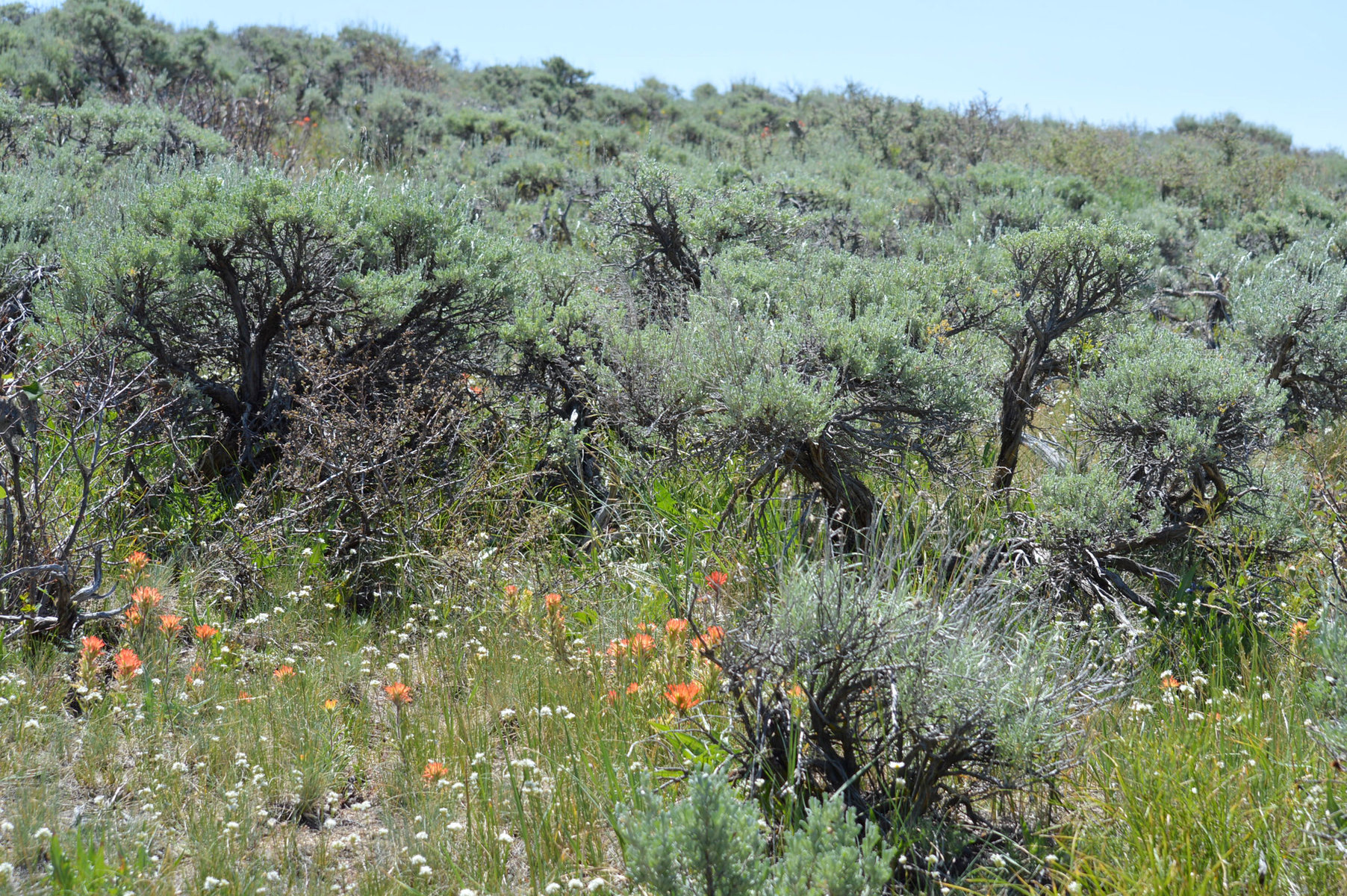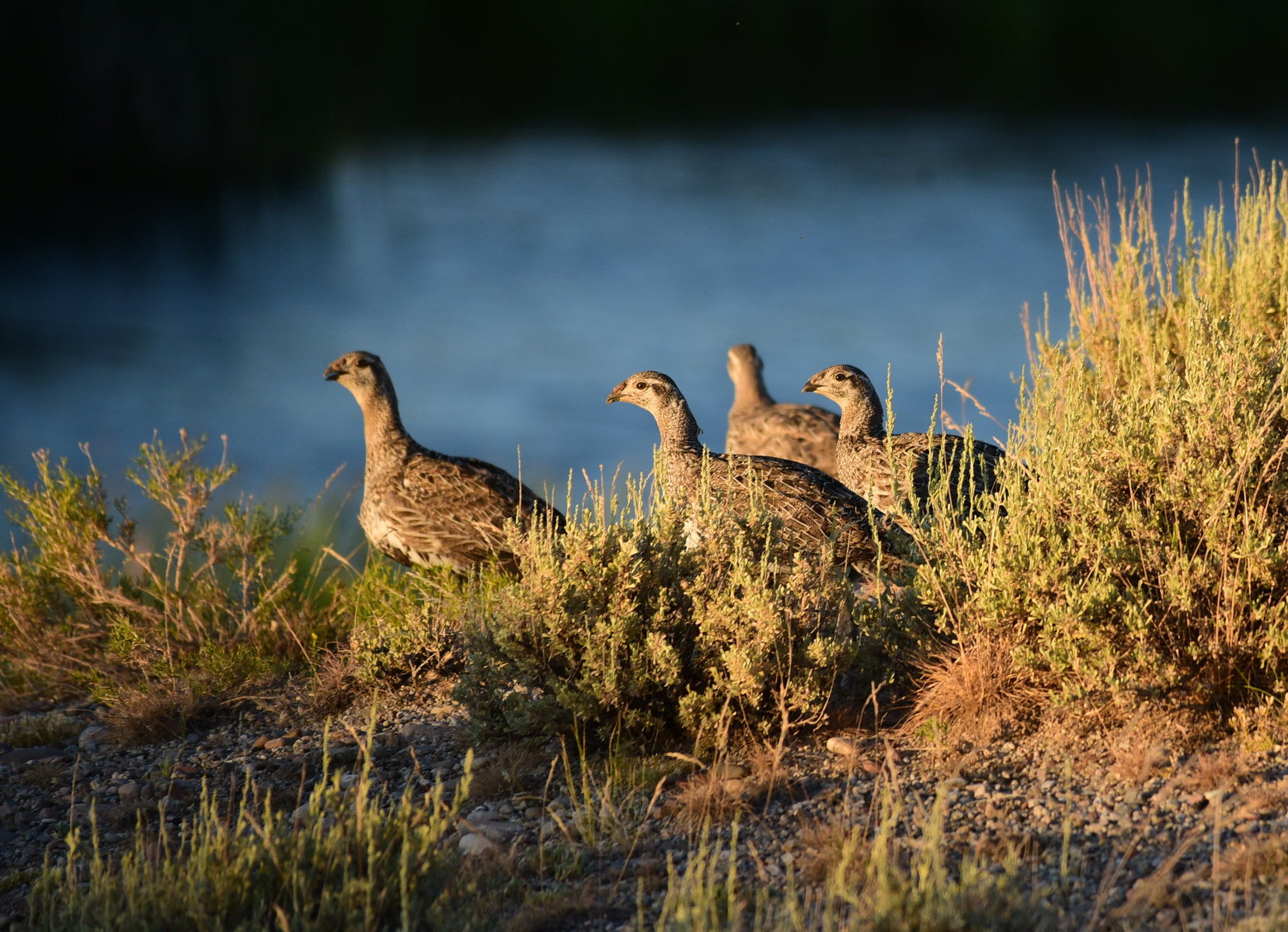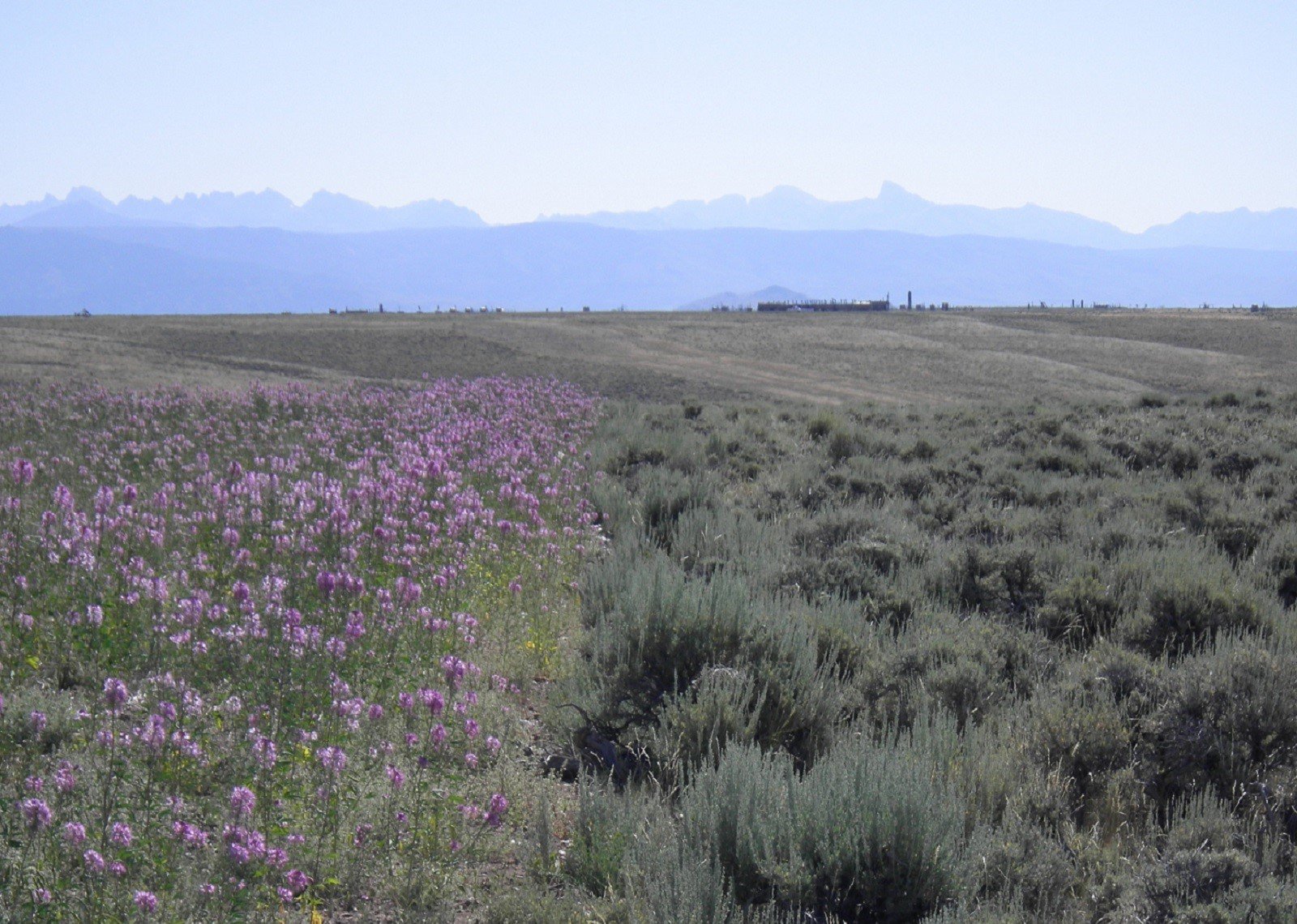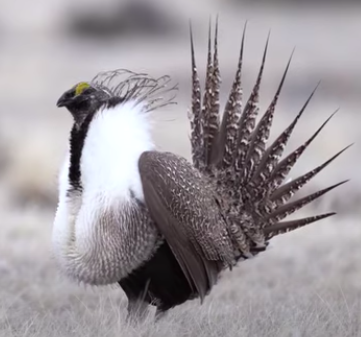Wyoming’s professional pollinator whisperer didn’t always like bugs very much.
He’s a common sight these days among the scrubby plants retaking former oil and gas well pads. But until he was about 20 years old, Michael Curran figured — as most people did — that insects were pests. “You’d think of termites and bees,” he says. “A bee was something that stung you.”
Then, when he was an undergraduate student at the University of Delaware, Curran took a class taught by a now-famous entomologist that would change the course of his life. He hadn’t intended to enroll. Everything else was full, and Behavioral Ecology of Insects ended up being the only option left that would fulfill a requirement for his biology degree.

“I wasn’t happy about being in an insect class,” he says. “And then it turned out that it was one of the most interesting classes I ever took.” Thanks to that class, and to the years he then spent working with that professor, Curran came to see insects as the overlooked linchpin of the ecosystems he studied.
Even then, he didn’t plan on devoting much of his life to insects. His love of native plants was what led him to enroll in an ecological restoration program at the University of Wyoming in 2010. It was his knowledge of insects, however, that helped keep him there for a decade as he worked toward his PhD.
Soon after he began his graduate program, Curran found himself in the middle of an unfolding crisis. The sagebrush sea, a fragile ecosystem stretching from Arizona to Montana and from California to Colorado, was disappearing. And the greater sage grouse, a chicken-sized bird loosely resembling the turkey collages that young children make around Thanksgiving, was on the brink of being added to the endangered species list.

State officials and private energy companies were scrambling to find a way to reverse the species’ decline without the federal government having to intervene. Aided by researchers, they came up with a conservation strategy that hinged on designating core sage grouse habitat and limiting human activity there.
Curran was the one who realized how crucial insects would be in achieving it. A decade later, he’s still adding new pieces to the puzzle.
Wyoming is home to more than a third of the world’s surviving greater sage grouse. The imperiled sagebrush ecosystem — the only place where the species is found — stretches across most of the state. It has fared better in Wyoming than in most other places: Nationally, an estimated 2,000 square miles of the iconic landscape have succumbed each year of the past two decades to human incursions, invasive species and the ever-intensifying droughts and wildfires brought on by climate change.
But sage grouse populations tend to fluctuate with the health of the ecosystem as a whole, and even Wyoming has struggled to improve its sage grouse numbers.
Though the parched, windswept landscape is inhospitable to humans and most other species, it is rich in hydrocarbons and renewable resources, making it attractive to all kinds of energy development. Wyoming’s oil and gas companies are not only active there but also highly transient, continually drilling new wells and closing off old ones. As a result, for as long as they’re operating in areas inhabited by sage grouse, oil and gas companies’ decisions about land restoration will have a significant impact on the species.
Curran began his research in Wyoming in the early 2010s by creating a database of what, exactly, oil and gas companies were doing when it came time to reclaim their well pads. Though the industry was required to reseed disturbed areas using native plants, companies employed a patchwork of methods with wide-ranging outcomes.
Weighed down by negative news?
Our smart, bright, weekly newsletter is the uplift you’ve been looking for.“I was tracking all the seed mixes and soil amendments, any sort of herbicide applications or fertilizers, or any sort of soil handling,” Curran says. “Anything that would be considered a reclamation practice.”
His goal, he says, was to gather enough data to “have the magic button to say, ‘This is how we do good reclamation in Wyoming.’” But the reality wasn’t that simple. Companies differed not only in the techniques they used, but in how they documented them, and the results were all over the map. Which meant a database alone wasn’t going to cut it.

So Curran started trying to standardize the way companies collected and reported their data. “A couple of companies started adopting that methodology,” he says. “That became the first chapter of my dissertation.”
He soon learned, too, that there were people already having a lot of success reclaiming well pads in Wyoming. Their methods worked. But even though all of the state’s oil and gas companies were required to reclaim their wells when production ceased, few knew how to get it right.
When Curran — by this point nearing the end of his PhD — showed up to a western Wyoming gas field armed with two coolers, a sweep net and hundreds of Ziploc bags, the site’s operators didn’t know what to think. The company had given money to the university to support Curran’s research. It had expected something more sophisticated than plucking insects off plants and stuffing them into bags.
But Curran was onto something. The companies that achieved the most successful regrowth often planted native annual species instead of trying to immediately reestablish the sagebrush. That “assisted succession,” he says, helps to trap moisture and stabilize the soil, creating more favorable growing conditions for sagebrush.
By the end of his first day in the field, Curran had proved his hunch. Because of the time he’d spent studying insects as an undergraduate, Curran understood just how crucial insects were in terrestrial ecosystems — and he knew that insect abundance could serve as an indicator for how well those ecosystems were functioning.

“If we took humans off the Earth,” he says, “the Earth would go on and probably not really miss us. Where if you took all the insects away … the whole food web would collapse.”
Sure enough, the sites that had been restored effectively were able to support way larger insect populations than the undisturbed sagebrush nearby.
Curran published a pair of peer-reviewed studies in 2022 detailing some of his results. He’d found up to a dozen times more insects on well pads reclaimed with a native annual flower, the Rocky Mountain bee plant, and up to four times more insects on well pads reclaimed with native grasses compared with reference areas. He’d identified a wider variety of insects on reclaimed well pads than reference areas. And he’d observed that all of these trends persisted across the entire growing season.
It took Curran a while to convince companies of the value of his work. Eventually, though, they started to listen. Over the past couple of years, some have begun to approach him. One conversation at a conference in 2022 turned into a project funded jointly by a Wyoming oil and gas producer and a major pipeline company.
The companies asked him to identify the things that were working and troubleshoot what wasn’t. He measured insect abundance, evaluated how the companies handled their soil and created a data system where they could log everything in the future. The goal, Curran said, was to do “a holistic dive into their reclamation practices.” Based on the numbers he crunched this fall, they’re already getting a lot right.
So far, Curran has partnered mostly with oil and gas companies. But he hopes that his work will ultimately give rise to restoration practices that are more consistent — and more effective — at other types of industrial sites, in the aftermath of natural disasters and even in places where existing habitat is being improved.
Curran arrived in Wyoming at precisely the right moment, when the state had the desire to deepen its knowledge of sage grouse and the funds to make it happen, says Nyssa Whitford, the Wyoming Game and Fish Department’s sage grouse biologist.
His work “is going to make sure that we’re not relearning reclamation every time we do it,” Whitford says. “We can … learn from what is working, and then keep replicating that, so we’re not reinventing the wheel each time we go out.”
Earlier this year, the Game and Fish Department gave Curran $20,000 to sift — with the help of an intern — through all the research done since 1930 on what sage grouse eat. (In the 20th century, unlike today, it was still legal to dissect the birds to study them.) Much of that work was never published, making it difficult for wildlife managers to reference.
Curran plans to use the grant to create a centralized source of information about the species’ diet. His hope is that it will enable restoration projects to incorporate plants that will attract the right insects, which will then attract sage grouse. If that happens, he says, it “will be a big leap in reclamation and habitat restoration efforts out in the Western states.” Because anywhere the conditions are right for sage grouse to thrive, there’s a good chance the rest of the ecosystem will be prospering, too.






